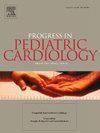埃塞俄比亚东部选定公立医院儿科心力衰竭患者的住院死亡率及相关因素
IF 0.8
Q4 PEDIATRICS
引用次数: 0
摘要
儿童心力衰竭的治疗结果仍然很差,如死亡率、发病率和住院率都很高。尽管全球范围内心力衰竭(HF)患儿预后不佳,但关于包括埃塞俄比亚在内的低收入地区HF患儿状况的数据有限。目的:本研究旨在评估埃塞俄比亚东部选定公立医院住院儿童的住院死亡率及其相关因素。方法采用回顾性队列研究设计。采用简单随机抽样的方法,选取2017年6月1日至2022年5月31日期间收治的671例小儿心衰患者的病历,从病历中收集数据。采用描述性统计分析患者的特征信息。采用Cox回归进行生存分析。使用95%置信区间的风险比和p值来检查与心力衰竭儿童住院死亡率相关的因素。p值为<;0.05表示显著相关。结果本研究分析了671例住院HF患儿。住院结果方面,386例(57.5%)患者好转出院,132例(19.7%)患者自行出院或不遵医嘱出院,49例(7.3%)患者转诊,104例(15.5%)患者在住院期间死亡。在多因素Cox回归分析中,女性(校正风险比:1.665,95%置信区间:1.111 ~ 2.494,p = 0.013)、营养不良(校正风险比:1.517,95%置信区间:1.018 ~ 2.259,p = 0.04)、年龄在1 ~ 5岁之间(校正风险比:1.834,95%置信区间:1.177 ~ 2.858,p = 0.007)和先天性心脏病(校正风险比:0.357,95%置信区间:0.357)的参与者:0.151 ~ 0.654, p = 0.002)与心衰患儿住院死亡率显著相关。结论总住院死亡率为15.5%。营养不良、1 - 5岁年龄组和女性与儿童死亡率相关。这些发现强调了在每次对五岁以下儿童进行随访时进行营养不良筛查的必要性。本文章由计算机程序翻译,如有差异,请以英文原文为准。
In-hospital mortality and associated factors among pediatric patients with heart failure at selected public hospitals of eastern Ethiopia
Background
The treatment of pediatric heart failure continues to have a poor outcome, such as significant mortality, morbidity, and hospitalization. Irrespective of the poor outcomes of children admitted with heart failure (HF) all over the globe, there is limited data on the status of children with HF in low-income settings, including Ethiopia.
Objectives
This study aimed to assess the magnitude of and factors associated with in-hospital mortality among admitted children at selected public hospitals in Eastern Ethiopia.
Methods
A retrospective cohort study design was conducted. A simple random sampling method was used to select medical records of 671 pediatric patients with HF admitted between June 01, 2017, and May 31, 2022, and data was collected from the medical records. Descriptive statistics were used to analyze information about patient's characteristics. A survival analysis by Cox regression was used to analyze the collected data. Hazard ratios with 95 % confidence interval and p-values were used to examine factors associated with in-hospital mortality of children with heart failure. A p-value of <0.05 was used to declare a significant association.
Results
The study analyzed 671 pediatric patients hospitalized with HF. Regarding the in-hospital outcomes, 386 (57.5 %) patients were discharged with improvement, 132 (19.7 %) patients were self-discharged or left against medical advice, 49 (7.3 %) patients were referred, and 104 (15.5 %) patients died while they were at the hospital. In a multivariate Cox regression analysis, participants with female gender (adjusted hazard ratio: 1.665, 95 % confidence interval: 1.111–2.494, p = 0.013), under-nutrition (adjusted hazard ratio: 1.517, 95 % confidence interval: 1.018–2.259, p = 0.04), age between one year to <5 years (adjusted hazard ratio: 1.834, 95 % confidence interval: 1.177–2.858, p = 0.007), and congenital heart disease (adjusted hazard ratio: 0.357, 95 % confidence interval: 0.151–0.654, p = 0.002) were significantly associated with in-hospital mortality of children with HF.
Conclusion
The overall in-hospital mortality rate was 15.5 %. Malnutrition, age group of one year to <5 years, and female gender were associated with pediatric mortality. These findings highlight the need for screening for malnutrition at each follow-up for under-five children.
求助全文
通过发布文献求助,成功后即可免费获取论文全文。
去求助
来源期刊

PROGRESS IN PEDIATRIC CARDIOLOGY
PEDIATRICS-
CiteScore
0.90
自引率
11.10%
发文量
69
审稿时长
75 days
期刊介绍:
Progress in Pediatric Cardiology is an international journal of review presenting information and experienced opinion of importance in the understanding and management of cardiovascular diseases in children. Each issue is prepared by one or more Guest Editors and reviews a single subject, allowing for comprehensive presentations of complex, multifaceted or rapidly changing topics of clinical and investigative interest.
 求助内容:
求助内容: 应助结果提醒方式:
应助结果提醒方式:


